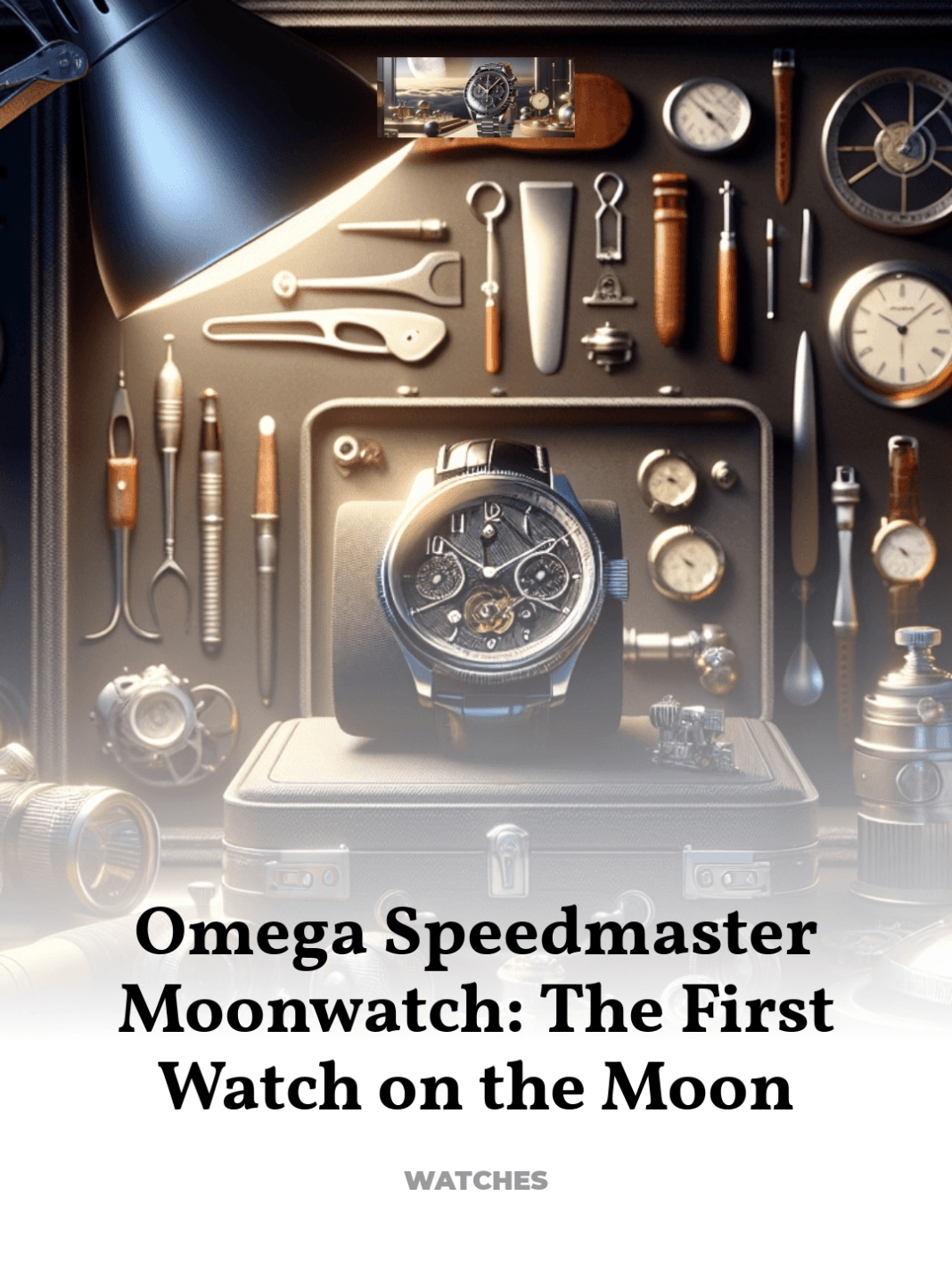The Legendary History of NASA’s Chosen Timepiece
The Omega Speedmaster Moonwatch not only measures time but also encapsulates a pivotal moment in human history. This iconic watch, known for its unparalleled journey to the Moon, represents a monumental achievement in both horology and space exploration.
- The Genesis of the Speedmaster: Crafting a Legend
- NASA’s Rigorous Selection: Why Speedmaster?
- The Apollo Missions: A Timepiece in Space
- Design and Mechanism: What Makes the Moonwatch Unique?
- Cultural Impact: The Speedmaster in Society and Collectibles
- Continuing Legacy: The Speedmaster Today
The Genesis of the Speedmaster: Crafting a Legend
The story of the Omega Speedmaster, affectionately known as the “Moonwatch,” begins in 1957. Originally designed as a sports and racing chronograph, its robustness, reliability, and readability made it an ideal candidate for the extremes of space. Omega’s commitment to precision and durability was evident from the outset, setting the stage for the Speedmaster’s legendary status.
Key features of the original Speedmaster included a triple-register chronograph layout, a high-contrast index for readability, and a tachymeter scale on the bezel – innovative at the time for its external placement, enhancing usability for racing drivers measuring speeds. These features, crafted with meticulous attention to detail, not only served racers but later astronauts on their missions.
Evolution of Design
- 1957: The first Speedmaster, the reference CK2915, was introduced with a Broad Arrow hand, setting a design standard.
- 1963: The Speedmaster Professional, or the reference 105.012, introduced crown guards and a slightly asymmetrical case to protect against impacts.
NASA’s Rigorous Selection: Why Speedmaster?
In the early 1960s, NASA began the search for a timepiece equipped for the upcoming manned space missions. The criteria were stringent, requiring a watch that could perform under conditions of zero gravity, extreme temperatures, and intense vibrations. Several watches were tested, but only the Omega Speedmaster met all of NASA’s demanding specifications.
The selection process was exhaustive and uncompromising, involving tests such as exposure to extreme temperatures ranging from -18 to +93 degrees Celsius, humidity, oxygen-rich environments, and shocks. The Speedmaster’s resilience in these tests earned it the title of “Flight Qualified for all Manned Space Missions” by NASA in 1965.
Historic Space Missions
- Apollo 11: On July 20, 1969, the Omega Speedmaster Professional became the first watch worn on the Moon, as Buzz Aldrin stepped onto the lunar surface.
- Apollo 13: The Speedmaster played a crucial role in timing critical engine burns during a malfunction, helping safely return the crew to Earth.
The Apollo Missions: A Timepiece in Space
The Omega Speedmaster’s journey to the Moon is not just a testament to its functionality but also its role in a larger narrative of human achievement. Each Apollo mission that the Speedmaster participated in added layers to its story, intertwining it with milestones in space exploration.
During Apollo 11, the Speedmaster was used to time the lunar landing itself and became a vital tool for the safe return of the Apollo 13 mission following an in-space explosion. The reliability of the Speedmaster under such circumstances solidified its reputation not just among engineers and astronauts but also in the public imagination.
Symbolic and Functional Role
- Reliability: The Speedmaster demonstrated consistent performance, regardless of the external conditions.
- Precision: Critical to navigation and safety, its precise chronograph mechanism was crucial for mission timing.
Design and Mechanism: What Makes the Moonwatch Unique?
The Omega Speedmaster Moonwatch is distinguished by its precise mechanical movement and its classic, functional design. The watch features a manual-winding movement, differentiating it from the more common automatic watches. This choice reflects the need for absolute reliability and control, essential in a high-stakes environment like space.
The design of the Speedmaster is focused on optimal readability and durability. Its black dial with luminous hands and markers ensures visibility in all conditions, and the hesalite crystal, while less scratch-resistant than sapphire, does not shatter, safeguarding the watch’s integrity and the astronaut’s safety.
Technical Specifications
- Movement: Calibre 321, a manual winding chronograph movement known for its robustness and reliability.
- Case: Originally 42mm in diameter, providing a balanced size for accessibility and visibility.
Cultural Impact: The Speedmaster in Society and Collectibles
The Omega Speedmaster, beyond its technical achievements, has become a cultural icon. It represents a time when humanity reached beyond its earthly bounds towards something greater. Collectors and enthusiasts cherish the Moonwatch not only for its history but also for its craftsmanship.
The Speedmaster has been celebrated in various forms, from special edition timepieces commemorating anniversaries of lunar landings to collaborations with astronauts who have worn them. Its presence in popular culture, including appearances in films and television, underscores its wide-reaching impact.
Collectibility and Heritage
- Limited Editions: Omega has released numerous limited editions that celebrate and remember the significant milestones of the Speedmaster’s history.
- Auction Records: Vintage Speedmasters have fetched high prices at auctions, reflecting their desirability among collectors.
Continuing Legacy: The Speedmaster Today
Today, the Omega Speedmaster continues to be a symbol of adventure, precision, and exploration. It remains a staple in Omega’s lineup, with new models that pay homage to its storied past while incorporating modern watchmaking innovations.
The enduring appeal of the Speedmaster lies in its timeless design and its continuous association with human space exploration. As we look towards future missions, perhaps to Mars and beyond, the Speedmaster serves as a reminder of where we have been and where we might go.
For further exploration of the Omega Speedmaster’s history and significance, visit authoritative sources such as the Omega Museum in Biel, Switzerland, or explore their dedicated archives online.



